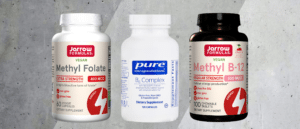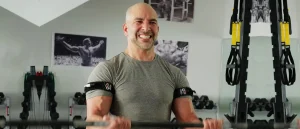Why Peter Attia Changed His Mind About 5 Popular Longevity Principles
L
ongevity expert doctor Peter Attia, M.D., has been tackling pressing topics around life- and healthspan on The Drive podcast for five years now. But in between hosting other experts like Rhonda Patrick or appearing on Oprah Daily, his views on several concepts—like intermittent fasting—have changed since the conception of his brand.
In a recent newsletter, he dives into why he’s switched up his views on five long standing longevity principles.
VO2 Max
Old thinking: VO2 Max only matters for fitness
New thinking: VO2 Max is a strong indicator of longevity
Boosting how much oxygen you can use during a workout—your VO2 max—indicates your aerobic endurance and cardiovascular fitness. It may also be associated with your lifespan.
“VO2 max is more important than I previously appreciated,” Attia says. “It is more strongly associated with reduced mortality risk than any other metric we know of, and this is likely because it’s the best integral function we have for exercise volume and intensity.”
The average VO2 max for men around 35 is 35 to 40 ml/kg/min when untrained and well above 50 to 60 ml/kg/min for elite athletes, according to a 2015 study by the Mayo Clinic (1). A lower VO2 max is associated with greater risk of cardiovascular disease and all-cause mortality, according to the American Heart Association.
To measure your VO2 max, you’ll want to head to a sports medicine facility or medical lab for a stress test. Fitness trackers like the Apple Watch Ultra, Garmin Fenix 7, Garmin Enduro, and Fitbit Charge 5 can also estimate your VO2 max.
The best way to increase your VO2 max is by focusing on endurance exercises (like sustained, zone 2 cardio) and interval training, according to The Edge’s Fitness and Nutrition Editor, Sydney Bueckert CPT, CES, FNS, GPT.
Heat Therapy
Old thinking: The sauna feels great, but that’s it
New thinking: Heat exposure boosts longevity
Attia points out the mounting evidence that heat therapy—particularly sauna use—may be beneficial in boosting your lifespan by improving sleep and cognition, and preventing cardiovascular disease.
He references a study that followed over 2,000 men for 20 years and tracked their dry sauna usage. Researchers found that those who used heat therapy regularly had 40% lower relative risk and 18% lower absolute risk of all cause mortality, and significantly lower risk of Alzheimer’s, stroke, or cardiac events (2).
Attia’s current heat exposure protocol includes 15 minutes in a 198 degrees Fahrenheit dry sauna, followed by a cold plunge.
Blood Flow Restriction (BFR)
Old thinking: Ouch!
New thinking: BFR optimizes gains
Attia wasn’t always on board with guys wrapping up their biceps for a greater pump. But now he uses blood flow restriction (BFR) training four times a week at the end of his workouts to maximize his own gains.
“Blood flow restriction is more than just a painful way to train. It is also very likely to be quite beneficial, enhancing gains in muscle mass and strength for a given load and number of reps,” Attia writes.
This technique allows you to reap all the benefits of a heavy load, without stacking your plates. BFR training may help reduce muscle atrophy and boost muscle growth even without lifting heavy (3, 4, 5).
BFR is best applied to single joint exercises since the fatigue of adding it to complex, compound movements can tank your form, according to Bueckert.
“Save it for the end of your workout and choose a few exercises that focus on muscle groups in your legs or arms you want to grow, like biceps curls, triceps extensions, leg extensions, and leg curls,” Bueckert suggests. “The perk of BFR is you’re able to build comparable size and strength gains at lighter loads, so keep it light—at around 20 to 30 percent of your one rep max.”
Energy Balance Model
Old thinking: Excess carbs is the primary reason for weight gain
New thinking: Your brain’s response to external signals controls food intake
Weight gain or loss might not be as simple as calories in, calories out.
“Though I once leaned toward the Carbohydrate-Insulin Model for weight gain/loss, I’ve come to believe that the Energy Balance Model provides a better explanation that more closely aligns with empirical evidence, especially in light of data from GLP-1 receptor agonist drugs,” Attia writes.
The Carbohydrate-Insulin Model suggests that obesity is caused by overconsumption of carbs, which disrupts insulin metabolism and can lead to weight gain (6). The Energy Balance Model points to the brain’s response to signals from your nervous system and environment as the reason for food intake, and therefore, weight gain or loss (7).
GLP-1 receptor agonist drugs—like Wegovy and Ozempic—diminish patients’ hunger and cravings by blocking the brain’s hunger signals. The Energy Balance Model would suggest that this mechanism is why Ozempic users experience such rapid and effective weight loss.
Workout Reps
Old thinking: More reps = stronger
New thinking: Less is more (if you do it right)
Quality over quantity holds true—even in the gym.
“Number of reps doesn’t matter as much as I had previously thought, provided you normalize for reps in reserve,” Attia writes. “Getting close to failure from a relatively low number of reps can lead to equal or greater strength gains than getting to the same point from a much higher number of reps.”
Reps in reserve (RIR) is how many more reps you could perform before failing, per Bueckert.
“If you finish a set of 10 back squats and know you could have repped out two more with solid form before failing, your RIR is two,” says Bueckert. “Aiming for a low RIR ensures you’re achieving the right stimulus to build strength, hypertrophy, power, etc. without having to go to failure every time.”
Training to failure too often can lead to overtraining (8). You’ll know you’re close to failure when the reps “feel insanely hard, but you should be able to complete them with good form.”
“Once your form starts breaking down, or if you physically cannot complete a rep, that’s failure,” Bueckert explains. “Using RIR is a method that can be used to ensure you’re making progress and recovering better between sessions.”
References
1. Kaminsky, et al (2015). Reference Standards for Cardiorespiratory Fitness Measured With Cardiopulmonary Exercise Testing: Data From the Fitness Registry and the Importance of Exercise National Database.
2. Laukkanen, et al (2015). Association Between Sauna Bathing and Fatal Cardiovascular and All-Cause Mortality Events.
3. Cerquiera, et al (2020). Effects of blood flow restriction without additional exercise on strength reductions and muscular atrophy following immobilization: A systematic review.
4. Wortman, et al (2021). Blood Flow Restriction Training for Athletes: A Systematic Review.
5. Formiga, et al (2020). EFFECT OF AEROBIC EXERCISE TRAINING WITH AND WITHOUT BLOOD FLOW RESTRICTION ON AEROBIC CAPACITY IN HEALTHY YOUNG ADULTS: A SYSTEMATIC REVIEW WITH META-ANALYSIS.
6. Ludwig, et al (2018). The Carbohydrate-Insulin Model of Obesity: Beyond ‘Calories In, Calories Out’
7. Hall, et al (2022). The energy balance model of obesity: beyond calories in, calories out.
8. Helms, et al (2016). Application of the Repetitions in Reserve-Based Rating of Perceived Exertion Scale for Resistance Training.














